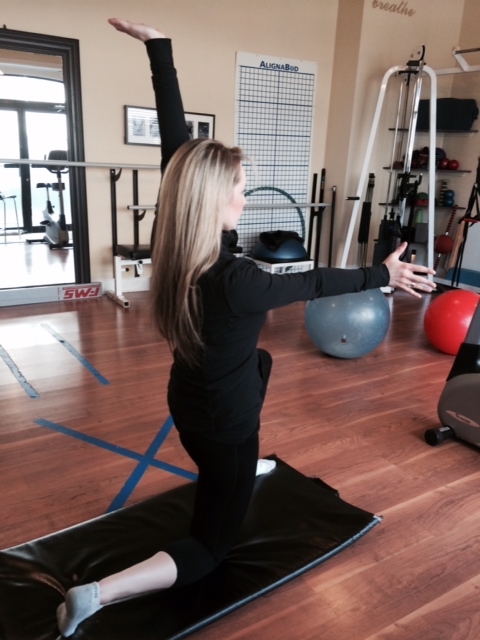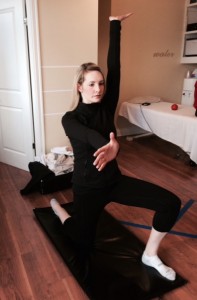The Psoas Major is much simplified in our quick-fix remedies for fitness pain and improvement. Much has been written and there is still much to say.
For those who are not yet familiar with the function of the psoas, lets begin by acknowledging some of the basics.
- Summarized, it is common knowledge that the psoas flexes the hip and knee. It shortens the joint space of the hip and effectively helps to pull the knee up.
- The psoas can shorten from extended seated posture, and this is a modern dilemma. This tightening can shorten stride length, it can fatigue other prime mover muscles, it can affect the health of the low back or lumbar spine.
- Psoas is really made up of two major components. Psoas Major and the Illiacus. It basically lines the inner hip bone, right up to the lumbar vertebrae L1-4 and the thoracic vertebrae T-12.
The psoas association to the lower back makes it intimately related to back pain issues. The head of the long
thigh bone, the femur, has a big head and small head. The psoas inserts on the small lateral head
positioning it more lateral than central. Its’ nerve supply is also from the lumbar spine. This anatomy of
the psoas shows us that the front of the body mechanics is greatly influenced by the back of the body
anatomy. So the lesson is – if you have back pain it could be the front of the hip. The Psoas hip flexor
could be responsible for stride shortening. For runners if your foot turn-over on runs is slowing down, it
could be the back and how it relates to the psoas.
Mostly over looked with the psoas is what organs ride up and down on it. The fascia of healthy
psoas has low friction to the organs around it and they should glide freely over and around the
psoas as it flexes. If the psoas is shortened and chronically operating in reduced ranges of
motion the organs that surround it will have decreased stimulation. The fascial layer of the
psoas and the organs should glide in and around one another like rubbing two hands together to
stay warm. Psoas does affect kidney, ovaries, and digestion. Psoas is more than a mechanical
flexor – it lubricates you on the inside.
So How do we Affectively Stretch the Psoas?
I see this done poorly all the time. We must engage the psoas based on its’ anatomy.
- Insertion is the lateral head of the femur
- Attachment is the lumbar spine and last vertebrae of the thoracic spine
- The route of the psoas is through the inside wall of the pelvic bone
PERFECT PSOAS POSTION:
- Kneeling and the back foot must turn out laterally to engage the lateral femur head
- Pelvic tilt. Roll the pelvis under to lengthen the attachments at the lumbar spine.
- Upper body engagement! Lengthen the spine by pressing to the sky through the crown of the head. No relaxed torsos.
- Engage the arms. They are connected to the … Thoracic spine. One arm overhead and one out in front with lots of tension.
- Fascia. You are releasing the fascia so engage the position with 100% tension in the position. Hold for 60-90 full seconds and breathe fully.
Release your innards, stretch the psoas.

Test your freedom of walking and leg feel on the stretched side before repeating on the opposite side.
Let us know how it works for you below in the comments! We are always happy to answer any questions you have as you work to incorporate healthier habits into your life:)



I have problems with my hips. I don’t understand your suggestions. Could you post a video showing the stretches? Thanks.
Hi Patty, Thank you for your comment. We just updated the post with some pictures of the proper stretching technique for you. We hope that helps!